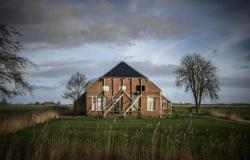The New Dutch Waterline and the Defense Line of Amsterdam have been the UNESCO World Heritage Dutch Waterlines since 2021. To draw attention to this special status, the information boards at the forts and various other water and defense structures have been renovated. Including at Fort Everdingen and the Wiel van Bassa.
New Dutch Waterline
The New Dutch Waterline and the Defense Line of Amsterdam have been part of the UNESCO World Heritage Dutch Waterlines since 2021. Late 19e century, this defense line was constructed to protect the west of the Netherlands in times of war against the enemy from the east. A unique and smart system with many forts, locks, canals and dikes. Wide strips of land were flooded up to knee height (inundation). This made the land impassable for soldiers, vehicles or horses. At the same time, the water was too shallow for a boat. Water became an ally.
Attention to UNESCO status
Many parts of the Dutch Waterlines are still clearly visible in the landscape. And several forts are open to the public. To show that all these objects are part of the UNESCO World Heritage Dutch Waterlines, new information boards in the house style of the Dutch Waterlines have been placed at the entrance to the forts. There are also new information boards at various group shelters or waterworks.
Tourist information
The signs provide information about the history and current use of the forts. You will also see what else you can see and experience in the area of the Dutch Waterlines.
In addition, you will meet an animal on each plate, such as the great crested newt and the owl. QR codes introduce you to fun cycling and walking routes.
The signs in the municipality of Vijfheerenlanden are at Fort Everdingen, the Beersluis, the Diefdijk and the Wiel van Bassa.
Loevestein Pact
The signs were made possible by the Loevestein Pact. This is a regional collaboration between the Province of Gelderland, the Province of North Brabant, the Brabant Landscape, Staatsbosbeheer, Waterschap Rivierenland and the municipalities of Culemborg, Tiel, Zaltbommel, Gorinchem, Altena, West-Betuwe, Lingewaard and Vijfheerenlanden. The focus is on protection, experience and sustainable maintenance of the southern part of the Dutch Waterlines.






